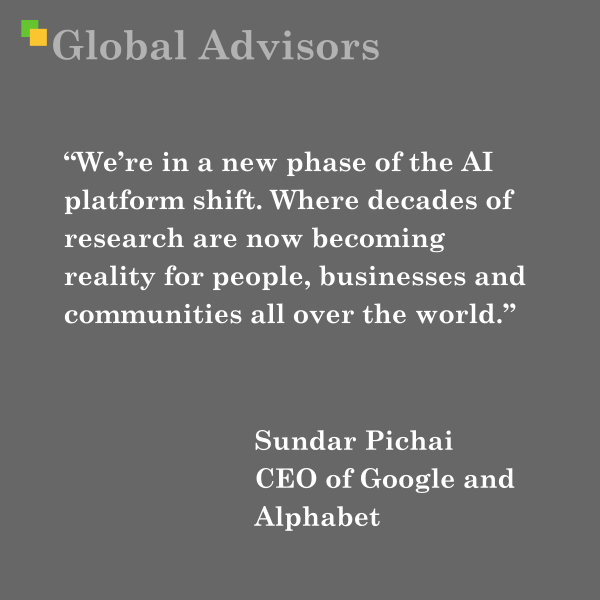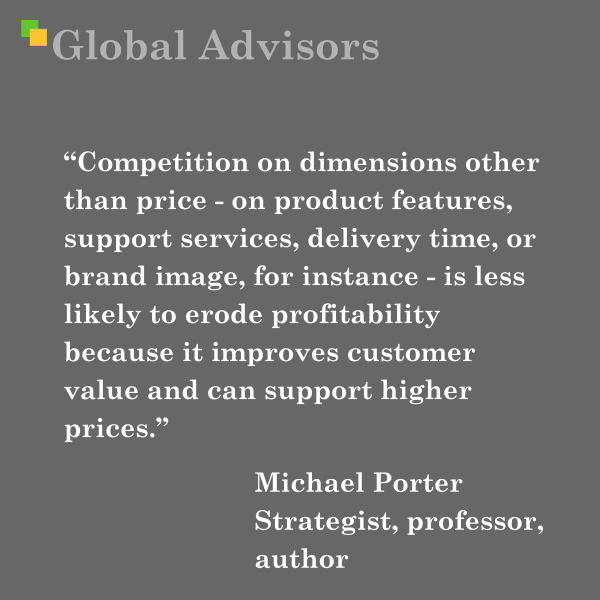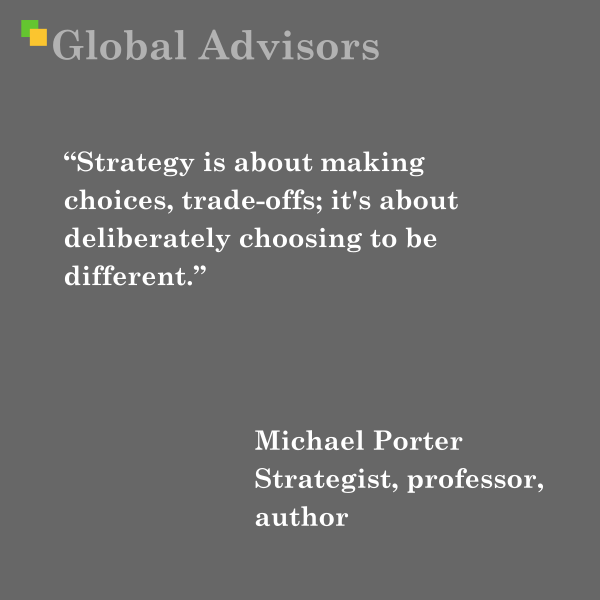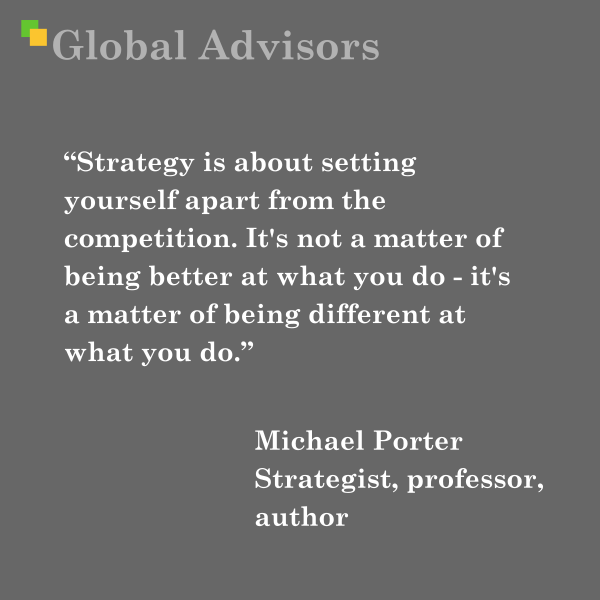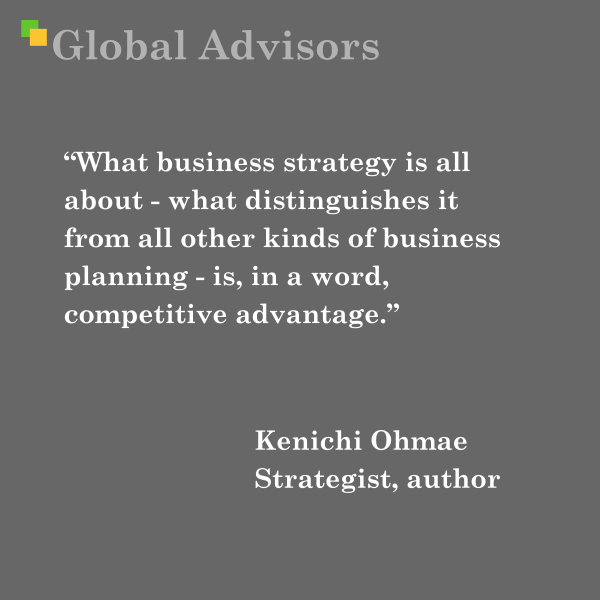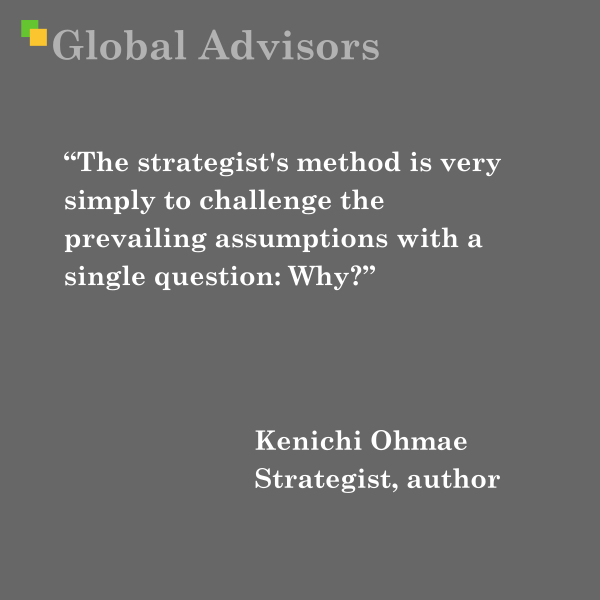| |
|
| |
| |
| |
|
A daily bite-size selection of top business content. |
| |
| |
| |
Quote: Sundar Pichai - CEO of Google and Alphabet“We’re in a new phase of the AI platform shift. Where decades of research are now becoming reality for people, businesses and communities all over the world.” - Sundar Pichai - CEO of Google and AlphabetIn a defining moment at Google I/O 2025, Sundar Pichai, CEO of Google and Alphabet, articulated a transformative vision: “We’re in a new phase of the AI platform shift. Where decades of research are now becoming reality for people, businesses, and communities all over the world.” This statement, delivered during his keynote address, encapsulates both Google’s trajectory under Pichai’s leadership and the seismic technological advancements unveiled at the event. To fully grasp the significance of this declaration, one must examine Pichai’s journey, the strategic context of Google’s AI evolution, and the groundbreaking tools announced at I/O 2025. Sundar Pichai: From Chennai to Silicon ValleyEarly Life and Academic FoundationsBorn in Madurai, Tamil Nadu, in 1972, Pichai Sundararajan grew up in a middle-class household in Chennai. His father, Regunatha Pichai, worked as an electrical engineer at General Electric Company (GEC), while his mother, Lakshmi, was a stenographer before becoming a homemaker. The family lived in a modest two-room apartment, where Pichai’s curiosity about technology was nurtured by his father’s discussions about engineering and his mother’s emphasis on education. Pichai attended Jawahar Vidyalaya and later Vana Vani Matriculation Higher Secondary School, where his academic prowess and fascination with electronics became evident. Classmates recall his ability to memorize phone numbers effortlessly and his habit of disassembling household gadgets to understand their mechanics. These early experiences laid the groundwork for his technical mindset. After excelling in his Class XII exams, Pichai earned admission to the Indian Institute of Technology (IIT) Kharagpur, where he studied metallurgical engineering. Despite the unconventional choice of discipline, he graduated at the top of his class, earning a Silver Medal for academic excellence. His professors, recognizing his potential, encouraged him to pursue graduate studies abroad. Pichai subsequently earned a Master’s degree in materials science from Stanford University and an MBA from the Wharton School of the University of Pennsylvania, where he was named a Siebel Scholar and Palmer Scholar. Career at Google: Architect of the Modern WebPichai joined Google in 2004, a pivotal year marked by the launch of Gmail. His early contributions included leading the development of the Google Toolbar and Chrome browser, which emerged as critical tools in countering Microsoft’s dominance with Internet Explorer. Pichai’s strategic foresight was evident in his advocacy for ChromeOS, unveiled in 2009, and the Chromebook, which redefined affordable computing. By 2013, Pichai’s responsibilities expanded to include Android, Google’s mobile operating system. Under his leadership, Android grew to power over 3 billion devices globally, while initiatives like Google Drive, Maps, and Workspace became ubiquitous productivity tools. His ascent continued in 2015 when he was named CEO of Google, and later, in 2019, CEO of Alphabet, overseeing a portfolio spanning AI, healthcare, and autonomous technologies. The AI Platform Shift: Context of the 2025 KeynoteFrom Research to RealityPichai’s quote at Google I/O 2025 reflects a strategic inflection point. For years, Google’s AI advancements—from DeepMind’s AlphaGo to the Transformer architecture—existed primarily in research papers and controlled demos. The 2025 keynote, however, emphasized operationalizing AI at scale, transforming theoretical breakthroughs into tools that reshape industries and daily life. Key Announcements at Google I/O 2025The event showcased over 20 AI-driven innovations, anchored by several landmark releases: 1. Gemini 2.5 Pro and Flash: The Intelligence EngineGoogle’s flagship AI model, Gemini 2.5 Pro, introduced Deep Think—a reasoning framework that evaluates multiple hypotheses before generating responses. Benchmarks showed a 40% improvement in solving complex mathematical and coding problems compared to previous models. Meanwhile, Gemini 2.5 Flash optimized efficiency, reducing token usage by 30% while maintaining accuracy, enabling cost-effective deployment in customer service and logistics. 2. TPU Ironwood: Powering the AI InfrastructureThe seventh-generation Tensor Processing Unit (TPU), codenamed Ironwood, delivered a 10x performance leap over its predecessor. With 42.5 exaflops per pod, Ironwood became the backbone for training and inferencing Gemini models, reducing latency in applications like real-time speech translation and 3D rendering. 3. Google Beam: Redefining Human ConnectionEvolving from Project Starline, Google Beam combined AI with lightfield displays to create immersive 3D video calls. Using six cameras and a neural video model, Beam rendered participants in real-time with millimeter-precise head tracking, aiming to eliminate the “flatness” of traditional video conferencing. 4. Veo 3 and Flow: Democratizing CreativityVeo 3, Google’s advanced video generation model, enabled filmmakers to produce high-fidelity scenes using natural language prompts. Paired with Flow—a collaborative AI filmmaking suite—the tools allowed creators to edit footage, generate CGI, and score soundtracks through multimodal inputs. 5. AI Mode for Search: The Next-Generation Query EngineExpanding on 2024’s AI Overviews, AI Mode reimagined search as a dynamic, multi-step reasoning process. By fanning out queries across specialized sub-models, it provided nuanced answers to complex questions like “Plan a sustainable wedding under $5,000” or “Compare immunotherapy options for Stage 3 melanoma”. 6. Project Astra: Toward a Universal AI AssistantIn a preview of future ambitions, Project Astra demonstrated an AI agent capable of understanding real-world contexts through smartphone cameras. It could troubleshoot broken appliances, analyze lab results, or navigate public transit systems—hinting at a future where AI serves as an omnipresent collaborator. The Significance of the “AI Platform Shift”A Convergence of CapabilitiesPichai’s declaration underscores how Google’s investments in AI infrastructure, models, and applications have reached critical mass. The integration of Gemini into products like Workspace, Android, and Cloud—coupled with hardware like TPU Ironwood—creates a flywheel effect: better models attract more users, whose interactions refine the models further. Ethical and Economic ImplicationsWhile celebrating progress, Pichai acknowledged challenges. The shift toward agentic AI—systems that “take action” autonomously—raises questions about privacy, bias, and job displacement. Google’s partnership with the Institut Curie for AI-driven cancer detection and wildfire prediction tools exemplify efforts to align AI with societal benefit. Economically, the $75 billion invested in AI data centers signals Google’s commitment to leading the global race, though concerns about energy consumption and market consolidation persist. Conclusion: Leadership in the Age of AISundar Pichai’s journey—from a Chennai classroom to steering Alphabet’s AI ambitions—mirrors the trajectory of modern computing. His emphasis on making AI “helpful for everyone” reflects a philosophy rooted in accessibility and utility, principles evident in Google’s 2025 releases. As decades of research materialize into tools like Gemini and Beam, the challenge lies in ensuring these technologies empower rather than exclude—a mission that will define Pichai’s legacy and the next chapter of the AI era. The Google I/O 2025 keynote did not merely showcase new products; it marked the culmination of a vision Pichai has championed since his early days at Google: technology that disappears into the fabric of daily life, enhancing human potential without demanding attention. In this new phase of the platform shift, that vision is closer than ever to reality.
|
| |
| |
Quote: Michael Porter - strategist, professor, author“Competition on dimensions other than price - on product features, support services, delivery time, or brand image, for instance - is less likely to erode profitability because it improves customer value and can support higher prices.” - Michael Porter - strategist, professor, authorMichael E. Porter, born on May 23, 1947, in Ann Arbor, Michigan, is a renowned economist and professor at Harvard Business School, widely recognized for his contributions to the field of competitive strategy. His early life was marked by frequent relocations across the United States, France, and Canada, due to his father's career as a civil engineer and army officer. This exposure to diverse cultures and economic environments sparked Porter's interest in understanding regional and national economic development. Porter's academic journey began with a Bachelor of Science in Engineering (BSE) in aerospace and mechanical engineering from Princeton University in 1969, where he graduated first in his class. He then pursued an MBA with high distinction from Harvard Business School, followed by a PhD in business economics from Harvard University in 1973. In 1983, Porter co-founded the Monitor Group, a strategy consulting firm that later became part of Deloitte Consulting. His seminal work, "Competitive Strategy" (1980), introduced frameworks like Porter's Five Forces, providing tools for analyzing industry competition. This was followed by "Competitive Advantage" (1985), where he introduced the value chain concept, emphasizing the importance of differentiating a company's activities to create unique value. Porter's quote, "Strategy is about setting yourself apart from the competition. It's not a matter of being better at what you do—it's a matter of being different at what you do," encapsulates his belief that true competitive advantage stems from uniqueness rather than mere operational efficiency. This perspective is further elaborated in his 1996 Harvard Business Review article, "What is Strategy?" where he asserts, "The essence of strategy is choosing what not to do." Throughout his career, Porter has emphasized that effective strategy involves making deliberate choices to deliver a unique mix of value to specific customer segments. This approach has influenced countless organizations and leaders, reinforcing the idea that differentiation, rather than direct competition, is key to sustainable success.
|
| |
| |
Quote: Michael Porter - strategist, professor, author“The best CEOs I know are teachers, and at the core of what they teach is strategy.” - Michael Porter - strategist, professor, authorMichael E. Porter, born on May 23, 1947, in Ann Arbor, Michigan, is a renowned economist and professor at Harvard Business School, widely recognized for his contributions to the field of competitive strategy. His early life was marked by frequent relocations across the United States, France, and Canada, due to his father's career as a civil engineer and army officer. This exposure to diverse cultures and economic environments sparked Porter's interest in understanding regional and national economic development. Porter's academic journey began with a Bachelor of Science in Engineering (BSE) in aerospace and mechanical engineering from Princeton University in 1969, where he graduated first in his class. He then pursued an MBA with high distinction from Harvard Business School, followed by a PhD in business economics from Harvard University in 1973. In 1983, Porter co-founded the Monitor Group, a strategy consulting firm that later became part of Deloitte Consulting. His seminal work, "Competitive Strategy" (1980), introduced frameworks like Porter's Five Forces, providing tools for analyzing industry competition. This was followed by "Competitive Advantage" (1985), where he introduced the value chain concept, emphasizing the importance of differentiating a company's activities to create unique value. Porter's quote, "Strategy is about setting yourself apart from the competition. It's not a matter of being better at what you do—it's a matter of being different at what you do," encapsulates his belief that true competitive advantage stems from uniqueness rather than mere operational efficiency. This perspective is further elaborated in his 1996 Harvard Business Review article, "What is Strategy?" where he asserts, "The essence of strategy is choosing what not to do." Throughout his career, Porter has emphasized that effective strategy involves making deliberate choices to deliver a unique mix of value to specific customer segments. This approach has influenced countless organizations and leaders, reinforcing the idea that differentiation, rather than direct competition, is key to sustainable success.
|
| |
| |
Quote: Michael Porter - strategist, professor, author“The purpose of the corporation must be redefined as creating shared value, not just profit per se. This will drive the next wave of innovation and productivity growth in the global economy.” - Michael Porter - strategist, professor, authorMichael E. Porter, born on May 23, 1947, in Ann Arbor, Michigan, is a renowned economist and professor at Harvard Business School, widely recognized for his contributions to the field of competitive strategy. His early life was marked by frequent relocations across the United States, France, and Canada, due to his father's career as a civil engineer and army officer. This exposure to diverse cultures and economic environments sparked Porter's interest in understanding regional and national economic development. Porter's academic journey began with a Bachelor of Science in Engineering (BSE) in aerospace and mechanical engineering from Princeton University in 1969, where he graduated first in his class. He then pursued an MBA with high distinction from Harvard Business School, followed by a PhD in business economics from Harvard University in 1973. In 1983, Porter co-founded the Monitor Group, a strategy consulting firm that later became part of Deloitte Consulting. His seminal work, "Competitive Strategy" (1980), introduced frameworks like Porter's Five Forces, providing tools for analyzing industry competition. This was followed by "Competitive Advantage" (1985), where he introduced the value chain concept, emphasizing the importance of differentiating a company's activities to create unique value. Porter's quote, "Strategy is about setting yourself apart from the competition. It's not a matter of being better at what you do—it's a matter of being different at what you do," encapsulates his belief that true competitive advantage stems from uniqueness rather than mere operational efficiency. This perspective is further elaborated in his 1996 Harvard Business Review article, "What is Strategy?" where he asserts, "The essence of strategy is choosing what not to do." Throughout his career, Porter has emphasized that effective strategy involves making deliberate choices to deliver a unique mix of value to specific customer segments. This approach has influenced countless organizations and leaders, reinforcing the idea that differentiation, rather than direct competition, is key to sustainable success.
|
| |
| |
Quote: Michael Porter - strategist, professor, author“Strategy is about making choices, trade-offs; it's about deliberately choosing to be different.” - Michael Porter - strategist, professor, authorMichael E. Porter, born on May 23, 1947, in Ann Arbor, Michigan, is a renowned economist and professor at Harvard Business School, widely recognized for his contributions to the field of competitive strategy. His early life was marked by frequent relocations across the United States, France, and Canada, due to his father's career as a civil engineer and army officer. This exposure to diverse cultures and economic environments sparked Porter's interest in understanding regional and national economic development. Porter's academic journey began with a Bachelor of Science in Engineering (BSE) in aerospace and mechanical engineering from Princeton University in 1969, where he graduated first in his class. He then pursued an MBA with high distinction from Harvard Business School, followed by a PhD in business economics from Harvard University in 1973. In 1983, Porter co-founded the Monitor Group, a strategy consulting firm that later became part of Deloitte Consulting. His seminal work, "Competitive Strategy" (1980), introduced frameworks like Porter's Five Forces, providing tools for analyzing industry competition. This was followed by "Competitive Advantage" (1985), where he introduced the value chain concept, emphasizing the importance of differentiating a company's activities to create unique value. Porter's quote, "Strategy is about setting yourself apart from the competition. It's not a matter of being better at what you do—it's a matter of being different at what you do," encapsulates his belief that true competitive advantage stems from uniqueness rather than mere operational efficiency. This perspective is further elaborated in his 1996 Harvard Business Review article, "What is Strategy?" where he asserts, "The essence of strategy is choosing what not to do." Throughout his career, Porter has emphasized that effective strategy involves making deliberate choices to deliver a unique mix of value to specific customer segments. This approach has influenced countless organizations and leaders, reinforcing the idea that differentiation, rather than direct competition, is key to sustainable success.
|
| |
| |
Quote: Michael Porter - strategist, professor, author“Strategy is about setting yourself apart from the competition. It's not a matter of being better at what you do - it's a matter of being different at what you do.” - Michael Porter - strategist, professor, authorMichael E. Porter, born on May 23, 1947, in Ann Arbor, Michigan, is a renowned economist and professor at Harvard Business School, widely recognized for his contributions to the field of competitive strategy. His early life was marked by frequent relocations across the United States, France, and Canada, due to his father's career as a civil engineer and army officer. This exposure to diverse cultures and economic environments sparked Porter's interest in understanding regional and national economic development. Porter's academic journey began with a Bachelor of Science in Engineering (BSE) in aerospace and mechanical engineering from Princeton University in 1969, where he graduated first in his class. He then pursued an MBA with high distinction from Harvard Business School, followed by a PhD in business economics from Harvard University in 1973. In 1983, Porter co-founded the Monitor Group, a strategy consulting firm that later became part of Deloitte Consulting. His seminal work, "Competitive Strategy" (1980), introduced frameworks like Porter's Five Forces, providing tools for analyzing industry competition. This was followed by "Competitive Advantage" (1985), where he introduced the value chain concept, emphasizing the importance of differentiating a company's activities to create unique value. Porter's quote, "Strategy is about setting yourself apart from the competition. It's not a matter of being better at what you do—it's a matter of being different at what you do," encapsulates his belief that true competitive advantage stems from uniqueness rather than mere operational efficiency. This perspective is further elaborated in his 1996 Harvard Business Review article, "What is Strategy?" where he asserts, "The essence of strategy is choosing what not to do." Throughout his career, Porter has emphasized that effective strategy involves making deliberate choices to deliver a unique mix of value to specific customer segments. This approach has influenced countless organizations and leaders, reinforcing the idea that differentiation, rather than direct competition, is key to sustainable success.
|
| |
| |
Quote: Kenichi Ohmae - strategist, author“Rowing harder doesn't help if the boat is headed in the wrong direction.” - Kenichi Ohmae - strategist, authorKenichi Ohmae, often referred to as "Mr. Strategy," is a distinguished Japanese organizational theorist and management consultant renowned for his contributions to strategic thinking. Born in 1943 in Kitaky, Japan, Ohmae's academic journey includes a Bachelor of Science in chemistry from Waseda University, a Master of Science in nuclear physics from the Tokyo Institute of Technology, and a doctorate in nuclear engineering from the Massachusetts Institute of Technology. His professional career spans roles as a senior design engineer at Hitachi and a 23-year tenure at McKinsey & Company, where he co-founded its strategic management practice. In his seminal work, The Mind of the Strategist, Ohmae emphasizes the importance of challenging prevailing assumptions to develop effective strategies. He articulates this approach by stating, "The strategist's method is very simply to challenge the prevailing assumptions with a single question: Why?" This method involves persistently questioning existing practices to uncover underlying issues and opportunities for innovation. Ohmae's strategic philosophy is further encapsulated in his 3Cs Model, which identifies three critical factors for business success: the Company, the Customers, and the Competitors. He posits that a business strategist should focus on these elements to achieve a sustainable competitive advantage. This model underscores the necessity of understanding and integrating these components to formulate effective strategies. His insights have significantly influenced both Japanese and Western management practices, particularly in the realm of strategic planning and competitive analysis. By advocating for a questioning mindset and a comprehensive understanding of the business environment, Ohmae has provided a framework for organizations to navigate complex and dynamic markets.
|
| |
| |
Quote: Kenichi Ohmae - strategist, author“Analysis is the critical starting point of strategic thinking.” - Kenichi Ohmae - strategist, authorKenichi Ohmae, often referred to as "Mr. Strategy," is a distinguished Japanese organizational theorist and management consultant renowned for his contributions to strategic thinking. Born in 1943 in Kitaky?sh?, Japan, Ohmae's academic journey includes a Bachelor of Science in chemistry from Waseda University, a Master of Science in nuclear physics from the Tokyo Institute of Technology, and a doctorate in nuclear engineering from the Massachusetts Institute of Technology. His professional career spans roles as a senior design engineer at Hitachi and a 23-year tenure at McKinsey & Company, where he co-founded its strategic management practice. In his seminal work, The Mind of the Strategist, Ohmae emphasizes the importance of challenging prevailing assumptions to develop effective strategies. He articulates this approach by stating, "The strategist's method is very simply to challenge the prevailing assumptions with a single question: Why?" This method involves persistently questioning existing practices to uncover underlying issues and opportunities for innovation. Ohmae's strategic philosophy is further encapsulated in his 3Cs Model, which identifies three critical factors for business success: the Company, the Customers, and the Competitors. He posits that a business strategist should focus on these elements to achieve a sustainable competitive advantage. This model underscores the necessity of understanding and integrating these components to formulate effective strategies. His insights have significantly influenced both Japanese and Western management practices, particularly in the realm of strategic planning and competitive analysis. By advocating for a questioning mindset and a comprehensive understanding of the business environment, Ohmae has provided a framework for organizations to navigate complex and dynamic markets.
|
| |
| |
Quote: Kenichi Ohmae - strategist, author“The strategist's method is very simply to challenge the prevailing assumptions with a single question: Why?” - Kenichi Ohmae - strategist, authorKenichi Ohmae, often referred to as "Mr. Strategy," is a distinguished Japanese organizational theorist and management consultant renowned for his contributions to strategic thinking. Born in 1943 in Kitaky?sh?, Japan, Ohmae's academic journey includes a Bachelor of Science in chemistry from Waseda University, a Master of Science in nuclear physics from the Tokyo Institute of Technology, and a doctorate in nuclear engineering from the Massachusetts Institute of Technology. His professional career spans roles as a senior design engineer at Hitachi and a 23-year tenure at McKinsey & Company, where he co-founded its strategic management practice. In his seminal work, The Mind of the Strategist, Ohmae emphasizes the importance of challenging prevailing assumptions to develop effective strategies. He articulates this approach by stating, "The strategist's method is very simply to challenge the prevailing assumptions with a single question: Why?" This method involves persistently questioning existing practices to uncover underlying issues and opportunities for innovation. Ohmae's strategic philosophy is further encapsulated in his 3Cs Model, which identifies three critical factors for business success: the Company, the Customers, and the Competitors. He posits that a business strategist should focus on these elements to achieve a sustainable competitive advantage. This model underscores the necessity of understanding and integrating these components to formulate effective strategies. His insights have significantly influenced both Japanese and Western management practices, particularly in the realm of strategic planning and competitive analysis. By advocating for a questioning mindset and a comprehensive understanding of the business environment, Ohmae has provided a framework for organizations to navigate complex and dynamic markets.
|
| |
| |
Quote: Kenichi Ohmae - strategist, author“The strategist's method is very simply to challenge the prevailing assumptions with a single question: Why?” - Kenichi Ohmae - strategist, authorKenichi Ohmae, often referred to as "Mr. Strategy," is a distinguished Japanese organizational theorist and management consultant renowned for his contributions to strategic thinking. Born in 1943 in Kitaky?sh?, Japan, Ohmae's academic journey includes a Bachelor of Science in chemistry from Waseda University, a Master of Science in nuclear physics from the Tokyo Institute of Technology, and a doctorate in nuclear engineering from the Massachusetts Institute of Technology. His professional career spans roles as a senior design engineer at Hitachi and a 23-year tenure at McKinsey & Company, where he co-founded its strategic management practice. In his seminal work, The Mind of the Strategist, Ohmae emphasizes the importance of challenging prevailing assumptions to develop effective strategies. He articulates this approach by stating, "The strategist's method is very simply to challenge the prevailing assumptions with a single question: Why?" This method involves persistently questioning existing practices to uncover underlying issues and opportunities for innovation. Ohmae's strategic philosophy is further encapsulated in his 3Cs Model, which identifies three critical factors for business success: the Company, the Customers, and the Competitors. He posits that a business strategist should focus on these elements to achieve a sustainable competitive advantage. This model underscores the necessity of understanding and integrating these components to formulate effective strategies. His insights have significantly influenced both Japanese and Western management practices, particularly in the realm of strategic planning and competitive analysis. By advocating for a questioning mindset and a comprehensive understanding of the business environment, Ohmae has provided a framework for organizations to navigate complex and dynamic markets.
|
| |
| |
|
| |
| |

